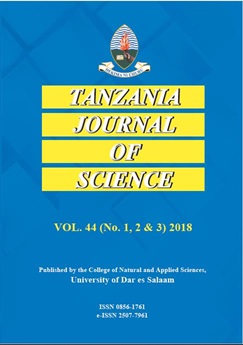Influence of Urban Land Use Land Cover Changes on Land Surface Temperature in Dar es Salaam Metropolitan City, Tanzania: The Use of Geospatial Approach
Abstract
Land use land cover (LULC) changes affect the planet's energy balance and region's climate. Land Surface Temperature (LST) is a vital indicator of this change. Studies in Dar es Salaam Metropolitan City have investigated LST and its relationships with building heights and densities, urban heat islands, spectral indices, and urban morphological determinants. The present study used cross-sectional profiles, chord diagrams, and simple linear regression models to examine the influence of LULC changes on the LST in Dar es Salaam Metropolitan City (DMC). LST was extracted from Landsat 5 TM and 8 OLI/TIRS images for 1995, 2009, and 2017. LULC was identified via the supervised random forest classification algorithm. Between 1995 and 2017, built-up areas rose by 8%, vegetation fell 7%, and bare soil 3%. As a result, the average LST rose by 3 °C. Built-up areas had the highest temperatures (24 €“26.5 °C), followed by bare soil (22 €“25.5 °C). The lowest temperatures (21 €“25 °C) were on vegetation and water. Built-up area positively correlated with LST, while vegetation, water bodies, and bare soil negatively correlated. The study results can assist local authorities in enforcing urban planning regulations, raising public awareness, and guiding policymakers in creating sustainable planning and management strategies for the future.
Keywords: Dar es Salaam; Land use land cover; simple linear regression model; land surface temperature; chord diagrams


